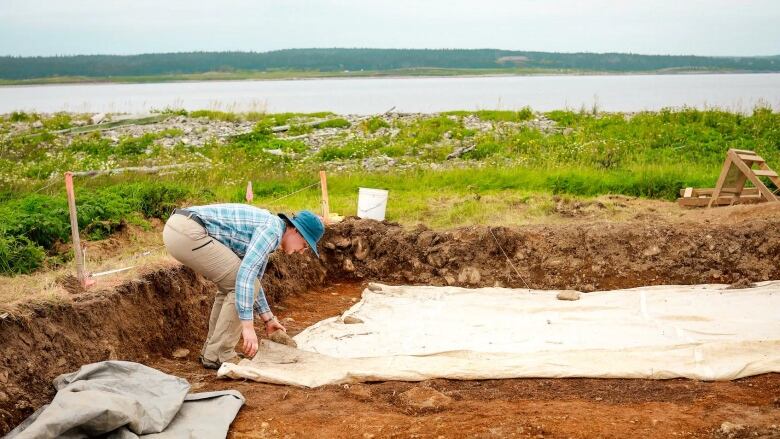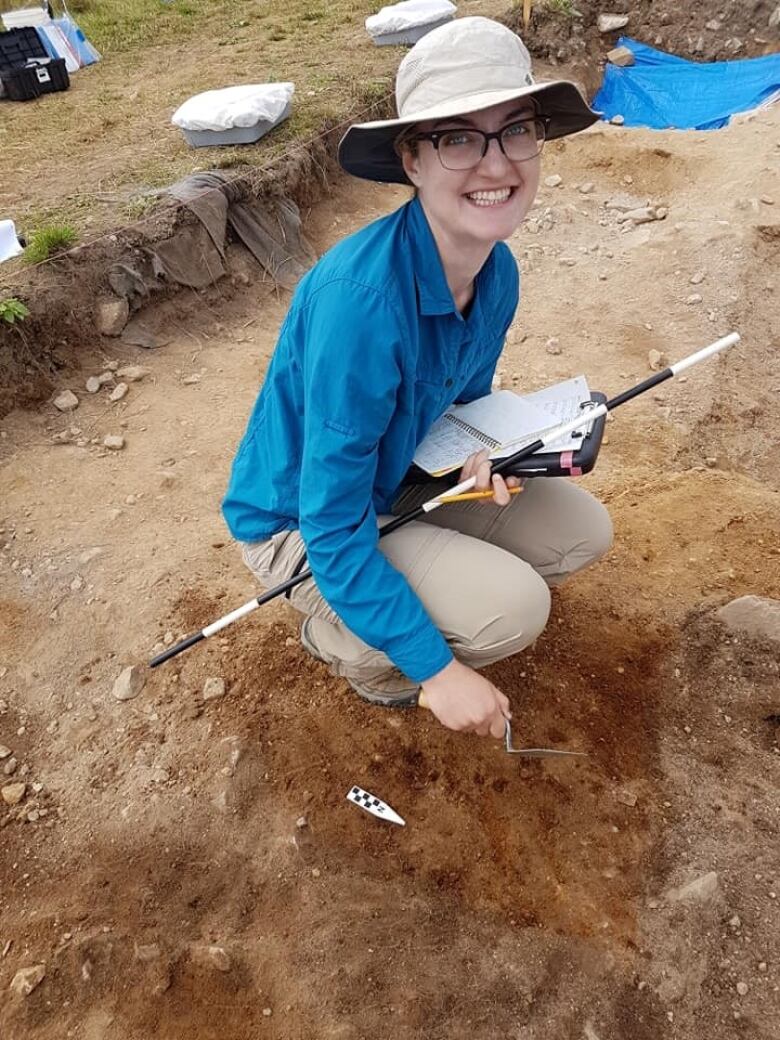Fiona exposed 18th-century human remains at Fortress of Louisbourg burial site
Erosion caused by storm sent archaeologists scrambling to save bones of 2 individuals

Skeletal remains of two people buried at the Fortress of Louisbourgmore than 200 years agowere exposed after post-tropical storm Fiona tore through the area.
The remains are from the 18th century and were located in a burial site at Rochefort Point at the National Historic Site.
Rochefort Point is a narrow peninsula exposed to the Atlantic Ocean. Since 2016, Parks Canada and the University of New Brunswick have been excavating remains of people buried there to prevent them from washing into the sea.
Work at the site is normally conducted in the summer but Fiona left archaeologists scrambling to move the remains of the two exposed individuals.
"Unfortunately, Fiona had a really big impact on the fortress and the surrounding area," said Mallory Moran, the archaeologist for the Cape Breton field unit for Parks Canada.
"In a lot of areas we saw that there was pretty extreme erosion. In some areas we lost metresof soil from the coastline."
Moran saidAmy Scott, a bioarchaeologist and the project's director, was able to come down and do an emergency excavation and restore the exposed areas.
"This is one of the reasons why we're taking a proactive approach in doing the rescue archaeology dig out on Rochefort Point," said Moran.
"We would prefer that we're able to save these individuals before they erode out."

All of the remains excavated at the site are sent to Scott's lab at UNB for analysis. The goal is to eventually reinter them somewhere safer at the Fortress of Louisbourg.
The burial site is believed to be quite large and may contain up to 1,000 individuals.
It was used to bury all sorts of people including women and children, not just military members.Their identities are unknown.
According to Moran, analysis of remains shows just how hard life was at the fortress during the early 18th century. Many of the remains show signs of malnutrition, parasitesand broken bones.

It's difficult to determine the size of the burial site because it isn't well marked and the soil is rocky, making it difficult to use things like ground-penetrating radar.
Not knowing how many people are buried at the site also makes it difficult to estimate the timeline needed to do the work. Moran said there is always a sense of urgency when working on the site but that has increased now.












_(720p).jpg)


 OFFICIAL HD MUSIC VIDEO.jpg)
.jpg)



























































































